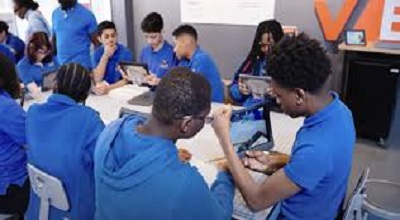Immersive Teacher Experiences
Immersive Teacher Experiences: The teaching profession is evolving rapidly, with immersive experiences transforming how educators engage with students, develop skills, and adapt to modern classrooms. From virtual reality (VR) to augmented reality (AR) and AI-driven teaching tools, immersive technologies are reshaping education.
At TeacherEducator.com, we explore the latest trends in immersive teacher experiences, their benefits, challenges, and prospects. This comprehensive guide will help educators, administrators, and policymakers understand how immersive learning can enhance teaching effectiveness.
What Are Immersive Teacher Experiences?
Definition and Key Components
Immersive teacher experiences refer to the use of advanced technologies like VR, AR, and AI to create engaging, interactive, and realistic training environments for educators. These tools help teachers practice classroom management, lesson delivery, and student engagement in a risk-free virtual setting.
Types of Immersive Technologies in Education
- Virtual Reality (VR): Fully digital environments where teachers can simulate classroom scenarios.
- Augmented Reality (AR): Overlays digital elements onto the real world, enhancing interactive learning.
- Mixed Reality (MR): Combines VR and AR for hybrid learning experiences.
- AI-Driven Simulations: Uses artificial intelligence to provide real-time feedback and coaching.
Latest Trends in Immersive Teaching
Virtual Reality (VR) in Teacher Training
VR is revolutionizing teacher preparation by offering lifelike classroom simulations. Programs like TeachLivE allow educators to practice handling diverse student behaviors in a controlled virtual space.
Augmented Reality (AR) for Classroom Engagement
AR apps like Google Expeditions enable teachers to bring interactive 3D models into lessons, making abstract concepts tangible.
Mixed Reality (MR) and Hybrid Learning
MR blends physical and digital classrooms, allowing teachers to use holographic projections for interactive lessons.
AI-Powered Simulations for Teacher Development
AI coaching tools like Edthena analyze teaching sessions and provide personalized feedback, helping educators refine their techniquesBenefits of Immersive Learning for Educators
Enhanced Engagement and Retention
Immersive tools make professional development more interactive, improving knowledge retention.
Real-World Classroom Simulations
Teachers can rehearse challenging scenarios (e.g., disruptive students) without real-world consequences.
Personalised Professional Development
AI-driven platforms tailor training programs based on individual teacher needs.
Challenges and Limitations
Cost and Accessibility Issues
High-end VR/AR equipment can be expensive for schools with limited budgets.
Technical Barriers for Educators
Not all teachers are tech-savvy, requiring additional training.
Resistance to Technological Adoption
Some educators prefer traditional methods, slowing down implementation.
Case Studies: Successful Implementation
VR-Based Teacher Training Programs
- University of Central Florida’s TeachLivE – Improved classroom management skills.
- Stanford’s VR Classroom – Enhanced empathy training for special education teachers.
AR Tools in K-12 Classrooms
- Merge Cube – Used for interactive science lessons.
- QuiverVision – Brings coloring pages to life with AR.
AI Coaching Platforms for Educators
- Edthena – Provides video-based feedback for teacher improvement.
Future of Immersive Teacher Experiences
Predictions for the Next Decade
- Wider adoption of VR/AR in teacher certification programs.
- AI becoming a standard tool for real-time classroom assistance.
Emerging Technologies in Teacher Education
- Haptic Feedback Gloves – For tactile learning experiences.
- Neural AI Tutors – Personalized student support systems.
How to Get Started with Immersive Teaching?
Best Tools and Platforms
- VR: Oculus Quest, ClassVR
- AR: Google Expeditions, HP Reveal
- AI Coaching: Edthena, TeachFX
Step-by-Step Implementation Guide
- Assess school needs and budget.
- Choose the right immersive tools.
- Train teachers on usage.
- Pilot test in select classrooms.
- Scale up based on feedback.
Conclusion
Immersive teacher experiences are transforming education by providing innovative training and engagement tools. While challenges exist, the benefits far outweigh the drawbacks. As technology advances, immersive learning will become a cornerstone of teacher development.
